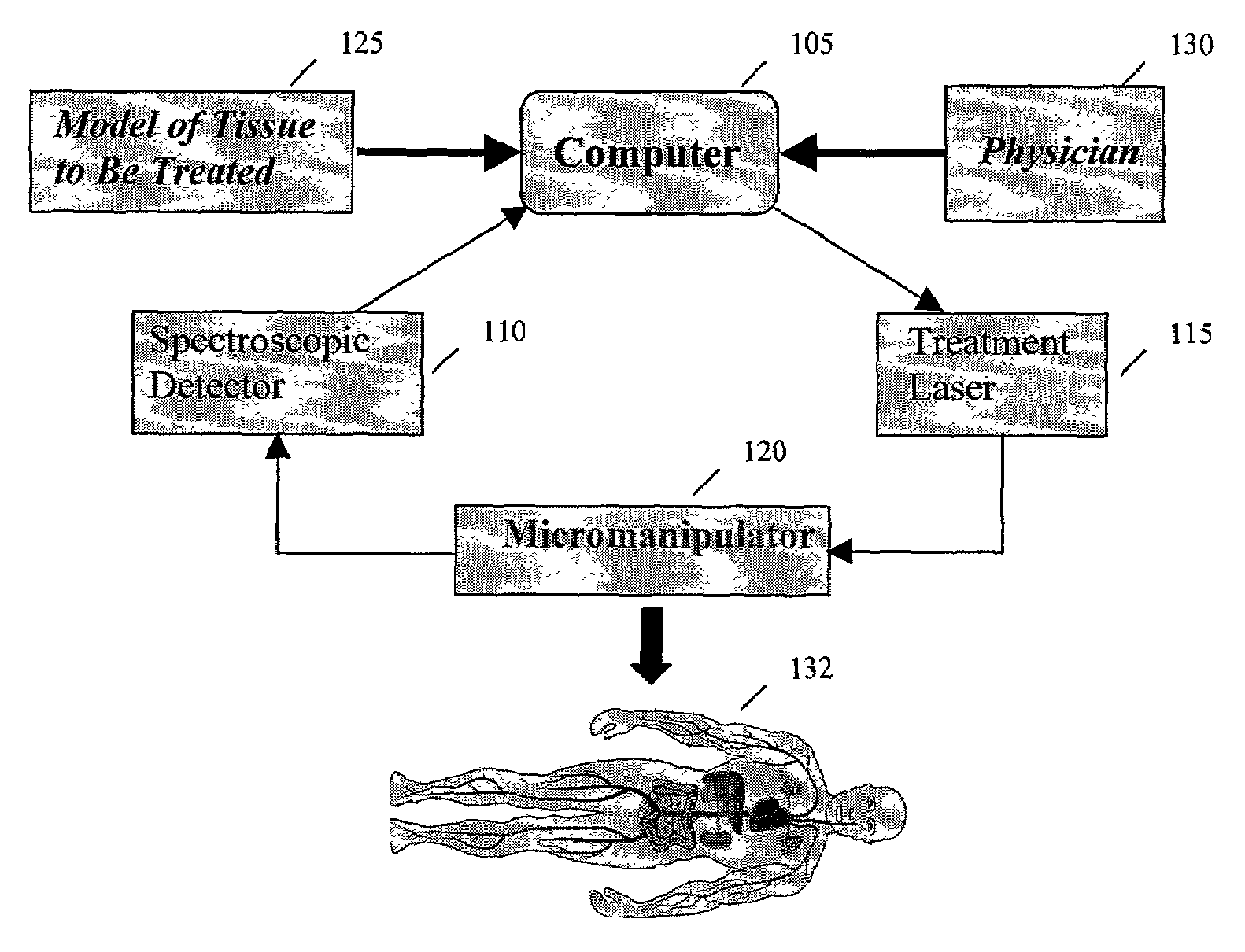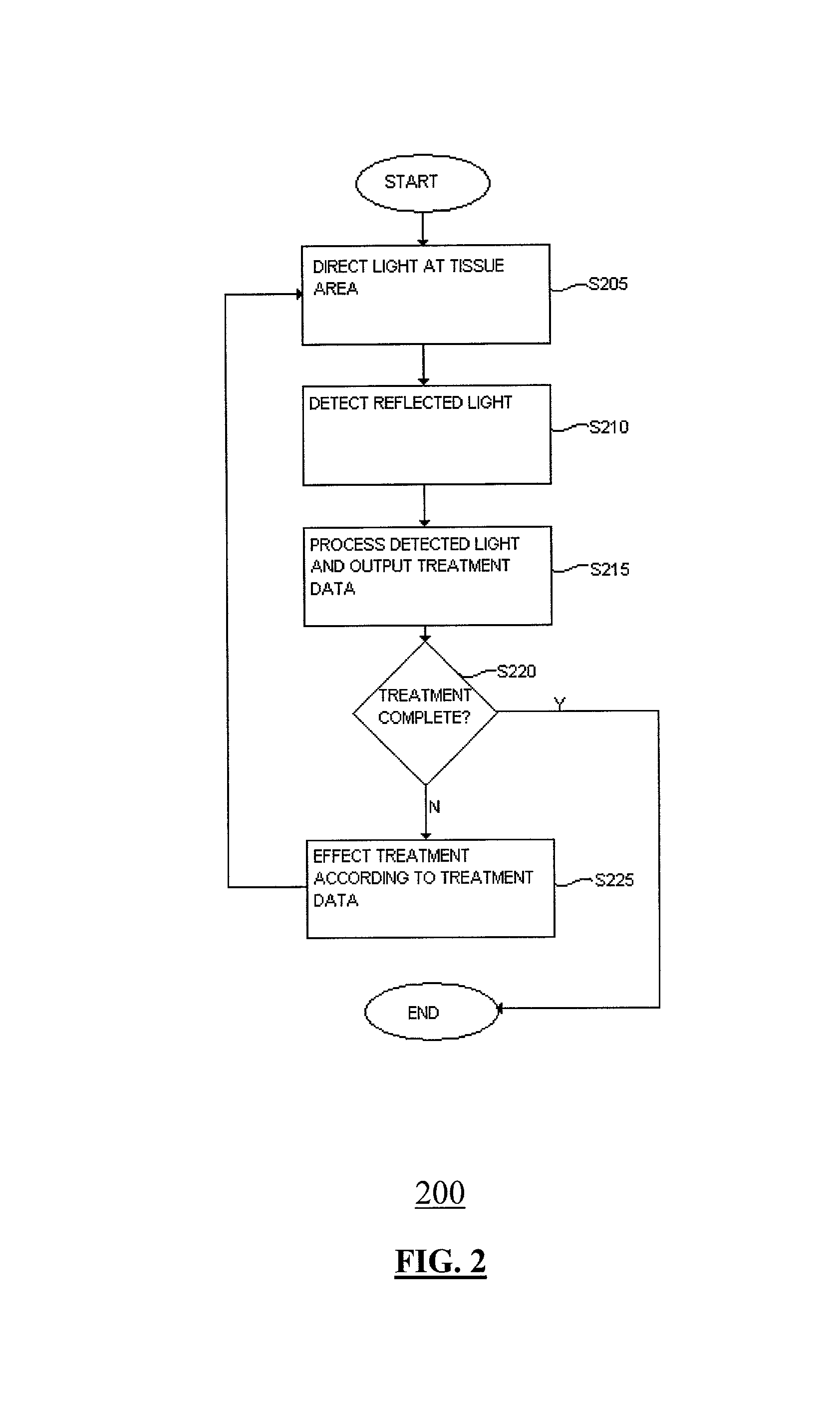Apparatus and method for laser treatment with spectroscopic feedback
a laser treatment and spectroscopic feedback technology, applied in the field of laser treatment apparatus and method, can solve the problems of hypertrophic scarring, poor reproducibility, and large variation
- Summary
- Abstract
- Description
- Claims
- Application Information
AI Technical Summary
Benefits of technology
Problems solved by technology
Method used
Image
Examples
Embodiment Construction
[0125]FIGS. 1A and 1B illustrate a Smart Scalpel system 100 in accordance with an embodiment of the present invention. As shown in FIG. 1A, Smart Scalpel system 100 includes a computer 105, a spectroscopic detector 110, a treatment laser 115, and a micromanipulator 120. Tissue model (physical properties) 125, as well as expert knowledge from a physician 130, describing a number of tissue attributes (e.g., those of healthy tissues versus those of diseased tissues to be excised) and / or targeting / treatment parameters may be input to computer 105. Computer 105, based on the inputted properties and / or parameters, may control spectroscopic detector 110 and treatment laser 115, which may be included in micromanipulator 120. Micromanipulator 120, which may be a handheld device, an automated apparatus, or the like, serves as an interface between a tissue volume (patient) 132 and Smart Scalpel 100, providing a convenient way to extract information about tissue state and to direct therapeutic ...
PUM
 Login to View More
Login to View More Abstract
Description
Claims
Application Information
 Login to View More
Login to View More - R&D
- Intellectual Property
- Life Sciences
- Materials
- Tech Scout
- Unparalleled Data Quality
- Higher Quality Content
- 60% Fewer Hallucinations
Browse by: Latest US Patents, China's latest patents, Technical Efficacy Thesaurus, Application Domain, Technology Topic, Popular Technical Reports.
© 2025 PatSnap. All rights reserved.Legal|Privacy policy|Modern Slavery Act Transparency Statement|Sitemap|About US| Contact US: help@patsnap.com



